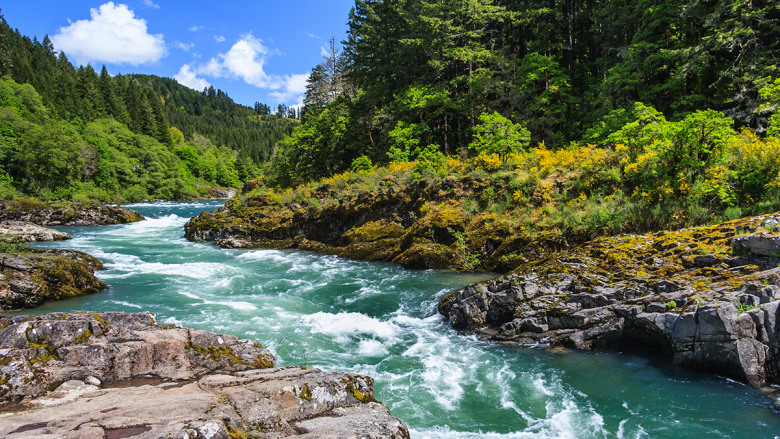
Editors’ Highlights are summaries of recent papers by AGU’s journal editors.
Source: Journal of Geophysical Research: Biogeosciences
Nature’s artistry extends to the Earth’s rivers, which display a range of colors. Colors of rivers are due to the absorption and scattering of light by sediments, organic matter, algae, and some types of bacteria. But river color can change because of human activities that increase erosion, add pollutants, and create algal blooms. As the rivers flow, patches of uneven color appear, but how this can affect patterns of river color has not yet been fully explored.
A new study by Bruns et al. [2024] on the Kansas River, USA examined the relationship between river flow and color using satellite-derived yellow for suspended sediments, and green for phytoplankton. The authors found that at high flows the river was homogeneously yellow. At lower flow levels, the river was mostly green with concentrated patches of green color behind more stagnant water (i.e., dams). Field measurements confirmed that the intense levels of green color were elevated levels of algae, and not suspended sediments. Their findings suggest that river color derived from satellite technology, together with river flow measurements, can serve as useful indicators of river health.
Citation: Bruns, N. E., Gardner, J. R., & Doyle, M. (2024). Flow-dependent color patches in a Great Plains river. Journal of Geophysical Research: Biogeosciences, 129, e2023JG007867. https://doi.org/10.1029/2023JG007867
—Marguerite A. Xenopoulos, Editor-in-Chief, JGR: Biogeosciences
Text © 2024. The authors. CC BY-NC-ND 3.0Except where otherwise noted, images are subject to copyright. Any reuse without express permission from the copyright owner is prohibited.
Related
